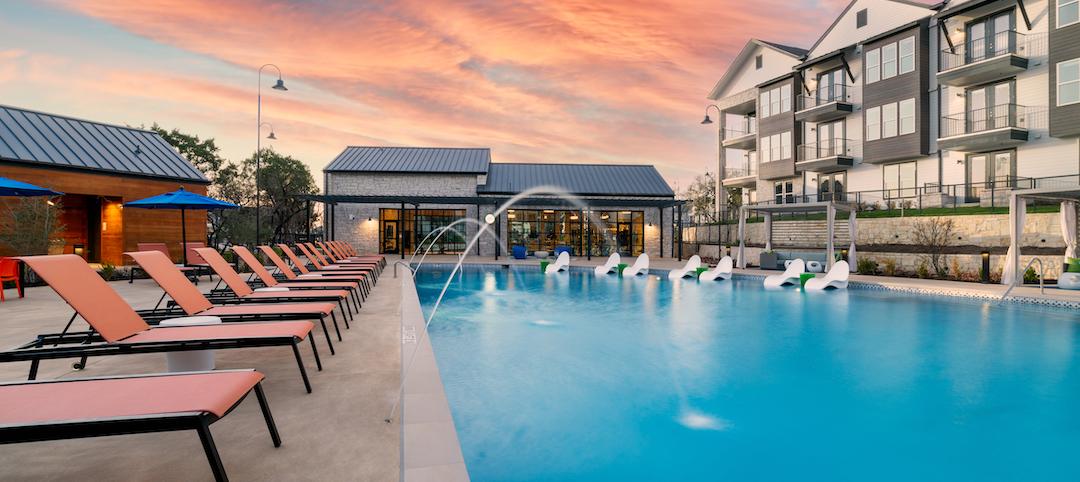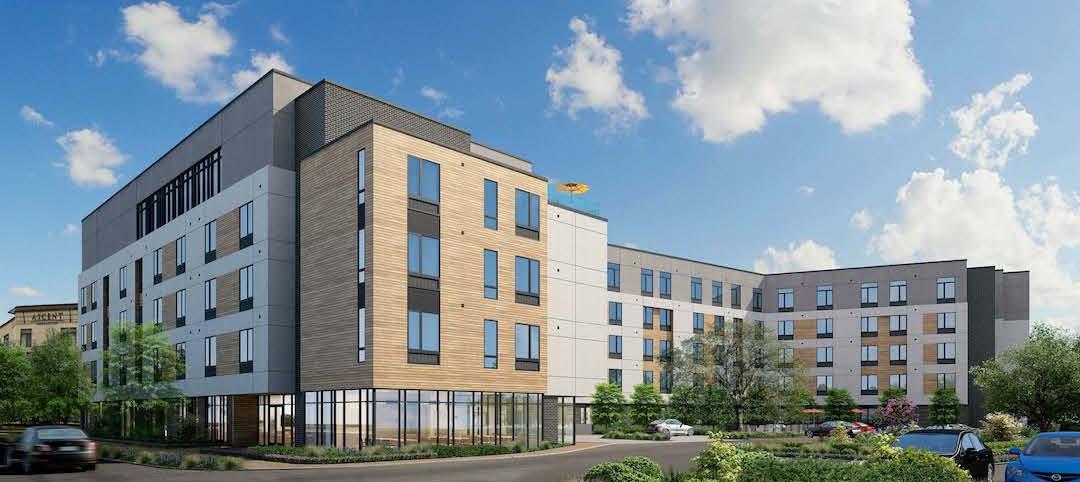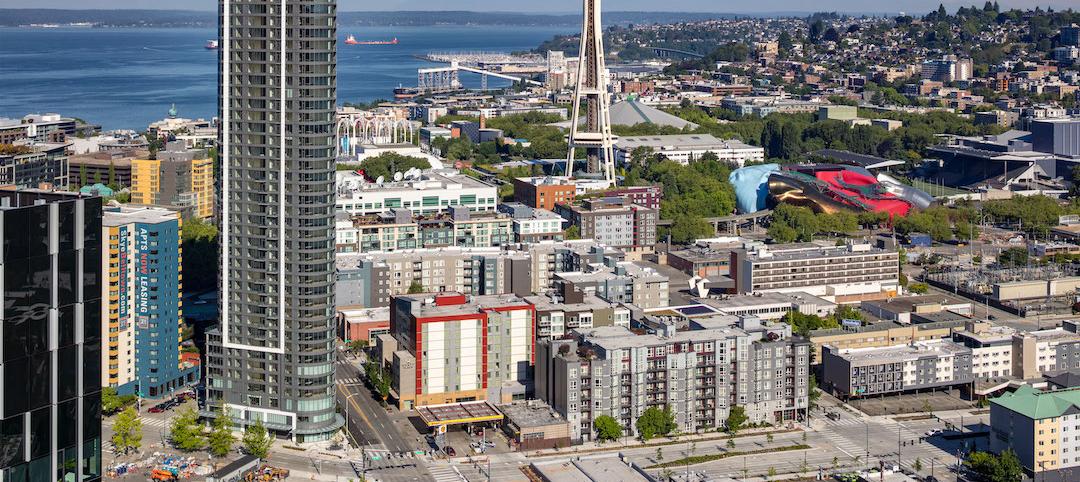Cornell Tech announced last week that the first residential building on its Roosevelt Island campus, developed in partnership with the Hudson Companies, will become the first high-rise residential building in the world built to Passive House standards. Passive House (PH) is the strict international building standard that drastically reduces energy consumption while creating a healthier and more comfortable living environment for a fraction of residents’ usual energy costs.
The building will become the beacon of the Cornell Tech campus and a symbol of the school’s unwavering commitment to innovative sustainability. Construction is set to begin this month on the 270-foot tall building, which will house approximately 350 residential units and is slated to open as part of the campus’ first phase in 2017.
To achieve Passive House standards, Cornell Tech Residential will incorporate a number of sustainability-focused design elements. The façade, constructed of a prefabricated metal panel system, acts as a thermally insulated blanket wrapping the building structure. At the southwest façade, facing Manhattan, the exterior façade opens to reveal a louver system that extends the entire height of the building. This reveal is designed to be the “gills” of the building, literally providing an enclosed exterior space where the heating and cooling equipment live, allowing the building system to breathe.
To achieve Passive House standards, Cornell Tech Residential will incorporate a number of sustainability-focused design elements. The façade, constructed of a prefabricated metal panel system, acts as a thermally insulated blanket wrapping the building structure. At the southwest façade, facing Manhattan, the exterior façade opens to reveal a louver system that extends the entire height of the building.
Low VOC-paint, which limits off-gassing and improves indoor air quality, will be used throughout the building, among many other elements. Compared to conventional construction, the building is projected to save 882 tons of CO2 per year, equal to planting 5,300 new trees.
“Constructing the first Passive House residential high rise in the world is the latest and most exciting example of our effort to set new benchmarks in sustainability and innovation,” said Cornell Tech Dean Daniel Huttenlocher. “We hope this will serve as a model for how Passive House standards can be brought to scale in the United States and create a new template for green design here in New York City.”
“We have spent the past two years working with an incredible team of engineers and designers to establish this new standard for a 26 story building,” said David Kramer, Principal of the Hudson Companies. “We hope that this boundary-pushing development will serve as a living lab and enduring inspiration to the community of next-generation problem solvers who will live within its (well insulated) walls.”
The plans to achieve Passive House standards at Cornell Tech Residential were developed by a team of experts, including Handel Architects, Steven Winter Associates, Buro Happold, Monadnock Construction and co-owner Related Companies.
Luke Falk, Assistant Vice President of Sustainability for Related Companies said, “We are quite literally breaking new ground with the development of the world’s first high-rise residential passive house and it signifies the deep commitment by the entire project team to create a paradigm-shifting campus in New York City. This milestone is also the culmination of unprecedented collaboration between the public and private sector and demonstrates the energy-saving potential of high rise residential architecture that can be achieved with forward thinking partnerships.”

Considered the most rigorous energy efficiency standard in the world, PH buildings consume 60-70% less energy than typical building stock, surpassing modern standards like LEED and NYSERDA. The design also has a tremendous economic benefit for residents: Cornell Tech Residential tenants can expect to see this savings reflected in their electricity bills.
Passive buildings incorporate a super insulated building façade, an airtight building envelope and an energy recovery ventilation (ERV) system to create a comfortable interior climate without drafts and cold spots. The ERV system constantly pulls in fresh air and removes stale air, while recovering the energy in the climate-controlled air leaving the building. The PH requirement for the airtight facade (measured as air changes per hour or ACH) is 0.6 ACH, ten times tighter than typical new construction; new construction buildings average 6-8 ACH, while typical brownstones average 25 ACH.
The new structure, which is being designed by New York City-based Handel Architects LLP, will be the tallest building on Cornell Tech’s campus and an iconic marker. The building’s exterior will shimmer, using a state-of-the-art, color-changing paint that, when reflecting light, naturally shifts color from silver to warm champagne. The interior is designed to provide a comfortable living experience that reinforces the social and intellectual connectivity that is at the heart of the school’s mission. It is geared to further a dynamic environment in which students and faculty can benefit from the synergy of their peers. The building features a number of collaborative spaces, both inside and outside, to facilitate collective academic creativity.
“High-rise multifamily housing is a vital part of the solution to the challenges we are facing with increasing world populations and a changing climate,” said Blake Middleton FAIA, Handel Architects LLP. “The Cornell Tech commitment to innovation was the impetus to rethink how these buildings are designed and built, and we expect this project to be a game-changer, creating a new paradigm for affordable, high-performance buildings to meet this challenge.”
Related Stories
Multifamily Housing | Oct 21, 2021
Chicago’s historic Lathrop public housing complex gets new life as mixed-income community
A revitalized New Deal–era public housing community in Chicago brings the Garden City movement of yesteryear into the 21st century.
Multifamily Housing | Oct 20, 2021
Sacramento’s first luxury high-rise rental residences announced
Southern Land Company is developing the project.
Multifamily Housing | Oct 18, 2021
Construction begins on downtown Fort Worth’s first luxury high-rise rental residences
GDA Architects designed the building.
Multifamily Housing | Oct 14, 2021
27-story Bronx tower will include retail, 200 apartment units
CetraRuddy is designing the project.
Multifamily Housing | Oct 12, 2021
Affordable and sublime: 13 projects that represent the future of affordable housing
These projects prove that it’s possible to develop aesthetically pleasing, high-quality housing for low-income families, the homeless, and veterans.
Multifamily Housing | Oct 12, 2021
New multifamily community completes in Austin
Britt Design Group and Davies Collaborative designed the project.
Multifamily Housing | Oct 6, 2021
New assisted living and memory care facility begins construction in Austin
OZ Architecture designed the project.
Multifamily Housing | Oct 4, 2021
Spire brings 343 condos to downtown Seattle
The project is the closest high-rise building to the Space Needle.
Multifamily Housing | Sep 29, 2021
Five-story apartment community in Duarte, Calif. breaks ground
The project is located 22 miles from downtown L.A.
Multifamily Housing | Sep 22, 2021
Designing for the ‘missing middle’ in multifamily housing
Multifamily housing expert Patrick Winters, AIA, discusses a neglected segment of the market: the "missing middle."

















